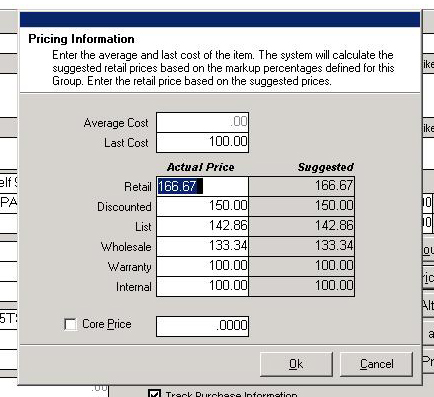Tools to Help Increase Your Profit
Linear Price Matrix
Standard pricing matrix offers a variable markup that can be assigned to a parts group. The suggested retail price will adjust based on the cost of the part. It allows you to charge a higher markup on parts with a lower cost. Below is an example of a typical price matrix.

There is one drawback to a standard price matrix. Think of a standard price matrix like a set of steps. When an item’s cost is at the low end of a “step”, a great deal of profit can be lost. The example below shows how a 2 cent difference in cost can affect your profit when using a standard price matrix.

Now, think of a linear price matrix like a slide or a hill. As the cost increases, your gross profit percentage will gradually decrease, removing the “steps” in a standard matrix. In the example below one can see that the overall gross profit decreases gradually instead of rapidly.

Labor Matrix
A Labor Matrix helps a shop maintain its profit level on jobs with reduced parts income. For example replacing a water pump can be more profitable because of the additional profit on the parts and materials required than replacing a main bearing where minimal parts would be sold. The rates in the example below are greatly exaggerated to provide a clear example on how the system works.

An example of the result is below.

You can see that the sell (hourly) amount is automatically adjusted as hours increase. YES will still allow for standard labor pricing on the same ticket, as with the Lube, Oil, & Filter Service above.
Mark Down from Price Level
This option allows the system to provide a discount from a sell price instead of a separate markup for a price level. For example, Price Levels 2 and 4 below give discounts from the Retail price.

The example below shows this pricing structure on an item which cost $100.00


Click here to download a Tools to Help Increase Your Profit Quick Reference Guide.
